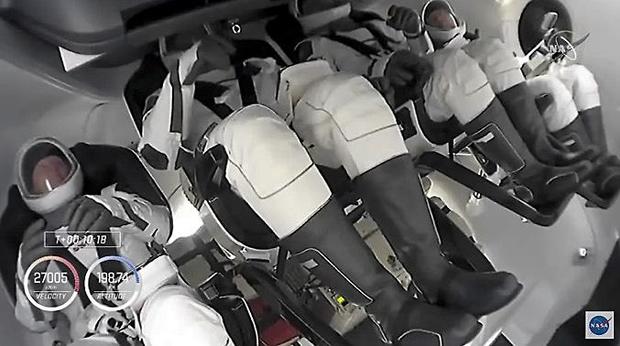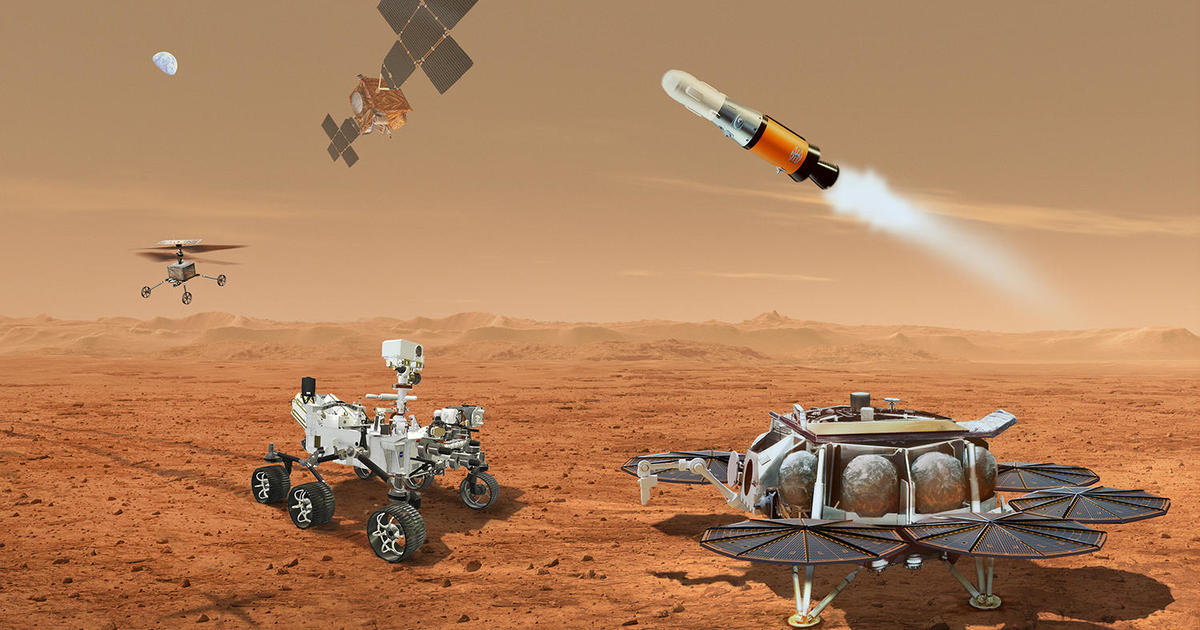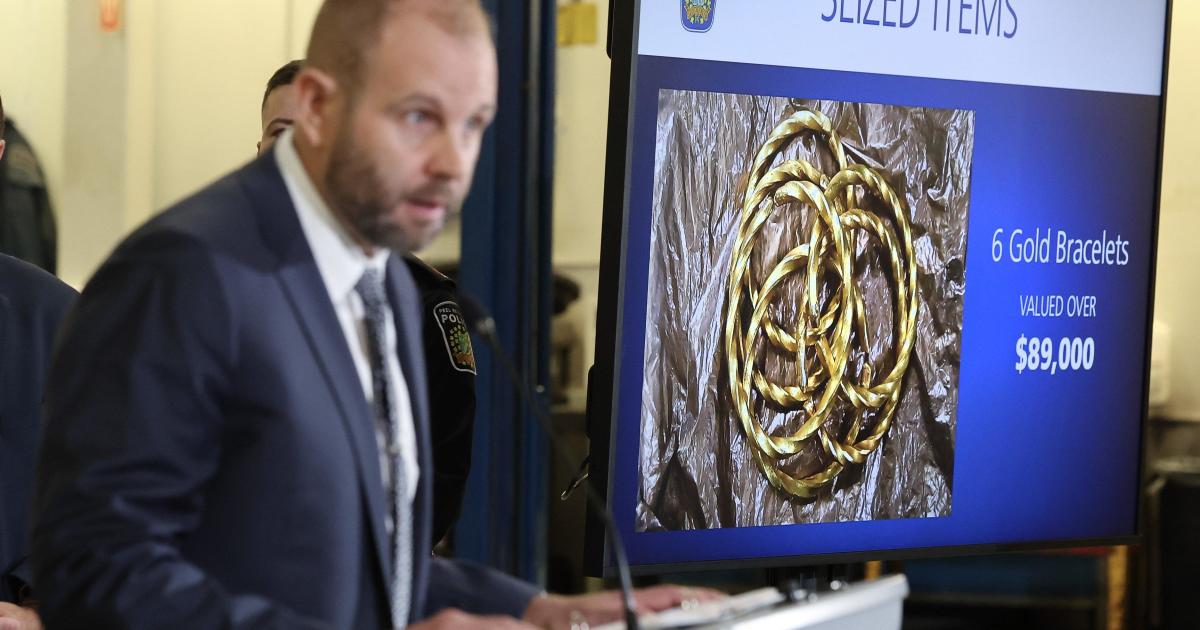SpaceX launches 4 astronauts to space station, beginning new era for NASA
Lighting up the night sky, four astronauts shot into orbit atop a SpaceX Falcon 9 rocket Sunday for a 27-hour voyage to the International Space Station in the first operational flight of a commercially developed Crew Dragon capsule.
Highlighting NASA's ongoing drive to end its sole reliance on Russian Soyuz spacecraft, the Falcon 9's first stage engines ignited with a torrent of flaming exhaust at 7:27 p.m., pushing the 229-foot-tall rocket away from pad 39A at the Kennedy Space Center atop 1.7 million pounds of thrust.
Commander Michael Hopkins, pilot Victor Glover, Shannon Walker and Japanese astronaut Soichi Noguchi, strapped into the capsule they named "Resilience," monitored the ascent on large touch-screen displays as the rocket quickly accelerated, arcing away to the northeast over the Atlantic Ocean.
NASA and SpaceX ruled out a launch try Saturday due to expected high winds across Florida's Space Coast and rough seas that prevented a SpaceX booster recovery ship from reaching its off-shore station in time.
The on-shore weather was an issue most of the say Sunday, but threatening clouds and rain did not materialize and after last-minute work to re-seal the Crew Dragon's hatch, the Falcon 9 was cleared for takeoff, thrilling thousands of area residents and tourists lining area roads and beaches amid NASA warnings to follow coronavirus protocols.
Vice President Mike Pence, chairman of the National Space Council, flew in to take in the historic launching from the upper deck of a NASA office complex a few miles from the launch pad.
And the Falcon 9 did not disappoint, streaking through the night sky trailing a long jet of fiery exhaust visible for miles around. In one minute, the rocket was traveling faster than sound and a minute-and-a-half later, now well out of the thick lower atmosphere, the engines shut down as planned.
The reusable first stage, making its maiden flight, then fell away and headed for touchdown on a SpaceX droneship stationed due east of the Carolinas while the second stage, powered by a single vacuum-rate engine, continued the climb to orbit.
Eight minutes and 50 seconds after liftoff, the second stage engine shut down, putting Hopkins and his crewmates in a preliminary orbit. Forty seconds after that, the first stage safely landed, chalking up SpaceX's 65th booster recovery, its 45th at sea.
Recovering the first stage was a major objective of the launch because SpaceX plans to refurbish the rocket and use if for the next Crew Dragon launch in late March.
In any case, with the booster safely down the Crew Dragon capsule was released from the Falcon 9's second stage a few minutes later to press ahead with a complex series of automated thruster firings to fine tune the spacecraft's approach to the space station.
The initial phases of the rendezvous went smoothly, but SpaceX engineers ran into problems with heaters used to keep thruster propellant lines at the proper temperature. Three of four heaters in one four-thruster "quad" appeared to be offline while flight rules require at least two of four to be operational.
"Temperature margins are looking OK, but that is something we are investigating and discussing," SpaceX communications officer Jay Aranha told the crew.
NASA later tweeted that, "Teams have re-enabled the Crew Dragon's propellant heaters and will continue collecting data" and followed it up with a tweet saying, "Update: @SpaceX confirms the propellant heaters are functioning properly with no issues. Crew-1 continues its journey to the @Space_Station."
President Trump and President-elect Biden offered starkly contrasting tones in post-launch tweets, with Trump claiming "@NASA was a closed up disaster when we took over. Now it is again the 'hottest', most advanced, space center in the world, by far!"
Biden sent congratulations to NASA, calling the launch "a testament to the power of science and what we can accomplish by harnessing our innovation, ingenuity and determination."
At the moment of launch, the station was sailing 259 miles above northern Syria. It will take the Crew Dragon 27-and-a-half hours to precisely match orbits with the lab complex, pulling up to within about 20 miles by 8 p.m. Monday.
If all goes well, the spacecraft will pass about 1,300 feet below the station before looping up to a point about 720 feet directly in front of the outpost.
From there, the Crew Dragon's flight computer will guide the ship in for a docking at the station's forward port, the same one once used by visiting space shuttles, at 11 p.m. Monday as the two spacecraft pass over the west coast of the United States.
It will be a long-awaited homecoming of sorts for Hopkins, Walker and Noguchi. All three are veterans of earlier long-duration station expeditions. Glover, a Navy F/A-18 carrier pilot-turned astronaut, is making his first space flight. He is the first African American to be assigned to a full-duration station crew.
Standing by to welcome the Crew-1 astronauts aboard the station will be Expedition 64 commander Sergey Ryzhikov, Sergei Kud-Sverchkov and NASA astronaut Kate Rubins. Rubins used NASA's last currently contracted Soyuz seat when she and her two crewmates blasted off Oct. 14 from the Baikonur Cosmodrome aboard the Soyuz MS-17/63S spacecraft.
"It's going to be great to watch the Crew-1 crew come through that hatch, and we'll definitely welcome them on board because with more crew members, we can spend a lot more time doing scientific research and experiments," Rubins said before launch.
"There's a certain amount of time we have to devote just to station maintenance, and with only one or two U.S. and international partner crew members, it's hard to get all of the science done that we want to do. So having all these extra crew members there means we can accomplish that much more scientifically."
Since 2006, NASA has spent $4 billion buying some 71 seats aboard Soyuz spacecraft to carry U.S., European, Canadian and Japanese astronauts to and from the station. Rubins' seat, the last one NASA plans to buy, cost $90 million.
While the Crew Dragon and, eventually, Boeing's CST-100 Starliner spacecraft will end NASA's sole reliance on Russia, it does not mean the end of joint flights.
NASA still plans to launch astronauts aboard Soyuz spacecraft through the life of the station program as a hedge against emergencies like a serious illness, for example, that could result in the early departure of a U.S. or Russian crew ship.
Mixed crews would ensure at least one astronaut or cosmonaut on board the station at all times, regardless of the sudden departure of a Soyuz or commercial crew ship, to operate their nation's systems.
But those mixed flights, including the eventual launch of Russian cosmonauts aboard the new American spacecraft, will be covered by barter arrangements, not direct cash payments. NASA will still be paying for seats aboard U.S. spacecraft — the cost is not yet known — but that money will be spent in the United States.






